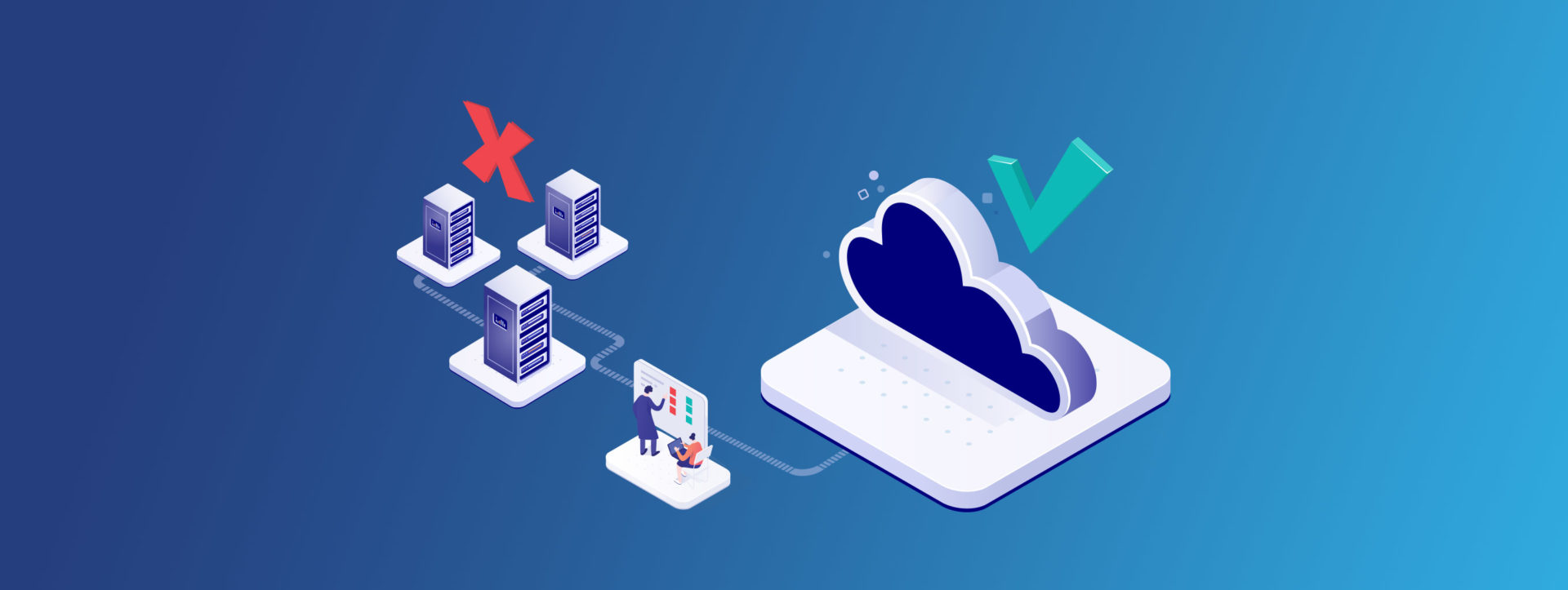
Three lessons learned from a financial planning strategy journey at PPHE Hotel Group
Accurate planning and forecasting within any hospitality organization is challenging, as it’s a sector prone…

The term “Cloud Computing” is said to have been first coined in a 1996 Compaq business plan, which described a vision for the widespread use of web-based computer storage. At that time, the internet was still in its infancy, and the idea of hosting software online would undoubtedly have seemed highly futuristic. Fast forward almost 25 years, and the use of cloud-based solutions has become commonplace for organizations looking to capitalize on the flexibility and scalability they offer. But despite these (and other) benefits and a continuous trend towards adopting cloud, there are still many enterprises missing out on the strategic opportunity presented by the cloud due to continued reliance on on-premise software solutions.
In a recent statement from IDC, in which they discuss cloud adoption and the opportunities that will continue to expand from cloud, several key factors driving the cloud market forward are identified. They state that, despite possible negative pressure from the COVID-19 pandemic, “The adoption of cloud services should enable organizations to shift IT from maintenance of legacy IT to new digital transformation initiatives.” (Source: IDC.)
For us, as a decision-making software vendor looking to help businesses drive digital transformation, this point is potent when considering how cloud can be an essential factor in supporting business activities and driving the company forward. Board’s Decision-Making Platform is, by nature, a transformative product, and cloud is now the default choice for new projects. But we are also seeing increasing numbers of customers migrating their on-premise Board instances to the cloud, helping to realize additional strategic benefits while adding a layer of robustness to tackle future planning and activities in a changeable environment.
Cloud-based applications bring numerous advantages over traditional, on-premise implementations. Whether you’re looking at a new project or considering migrating an existing one, here are five reasons why the cloud should be your platform of choice.
Cloud has a clear advantage in terms of the cost of both start-up and ongoing maintenance. After all, for on-site applications, you need hardware, a physical (and secure) space for servers, and power to keep everything running – on top of the software itself. On the contrary, cloud services are often based on a single cost, encompassing the software subscription and everything that comes with it (i.e. security, amount of storage space, upkeep, and so on). Important areas where financial savings can be made include:
As business data volumes continue to grow, so does the level of resources required to contain them. On-premise solutions, in general, are more expensive and complex to scale up in comparison to cloud solutions. For example, there is the need to buy the hardware, install it, having prerequisite digital space to keep it, and have staff on the payroll to implement it – all on top of the other maintenance-based costs highlighted above. For rapidly expanding businesses, this ongoing headache can easily be overcome with a cloud-based solution, which provides the flexibility to scale up (or down) with ease as requirements change.
Security, and the prerequisite compliance for handling data, is understandably a top priority for businesses. To this end, cloud providers typically have numerous protocols and compliance certifications in place as standard. While it remains the ultimate responsibility of the organization (not the cloud provider) to ensure that their own (and customers’) data is properly protected, stored, and managed, the huge benefit of migrating to the cloud is having these safeguarding measures inherent with the cloud-based solution. Other key advantages of cloud versus on-premise include:
Besides enhanced security, scalability, and understanding the ins and outs of costs, migrating to cloud also enriches how data is accessed. Cloud-based solutions can usually integrate and interface with data sources and other systems much more easily than their on-premise counterparts. Through this and the right planning and analytics solution, access to data is drastically enhanced through the ability to view everything in a single, accurate place. This provides valuable insights across key areas of the business which may previously have been inaccessible.
Additionally, cloud access, by its very nature, should improve collaboration in much the same way. Employees can access this data remotely, through any device, since it typically requires little more than an internet connection and user login credentials. With on-site solutions, while this is possible, it is often more complex to arrange with the same ease, particularly when considering geographic, language, or technical boundaries.
A cloud-based solution also drives collaboration by enabling access, analysis, and edits to be conducted in tandem with other users without impacting what they are doing.
The right platform, hosted in the cloud, offers the flexibility for organizations to adjust the technology to fit their business rather than the other way around. Enterprises will handle power, capacity, and additional users as needed by the evolution of their business and decision-making processes and benefit from new features as they are released. These greater levels of control can have widespread benefits for the business, positively influencing multiple departments and business functions from marketing to HR, to finance, to sales, and more as they are empowered with the right technology to meet their changing needs.
There are other benefits to adopting cloud. Let’s look at one example from business services provider Teleperformance UK, who, in a recent webinar, discussed numerous benefits of migrating to Board Cloud:
Ultimately, what Teleperformance achieved was to strategically future-proof the business for whatever lies ahead. It is now easier than ever to adapt the Board platform to evolving business processes, requirements, and teams. This is exactly what companies should be looking for from their software solutions in an increasingly changeable environment. After all, it is these solutions that support vital business activities and drive the company forward.
At such a turbulent time, where organizations globally are taking a hard look at themselves and wondering how they can come out of the pandemic stronger than ever, cloud adoption is vital in providing the flexibility, performance, and scope to drive profitable future performance.
Learn more about Teleperformance’s transformational journey by watching the on-demand webinar.
Learn more about Teleperformance's transformational journey by watching the on-demand webinar